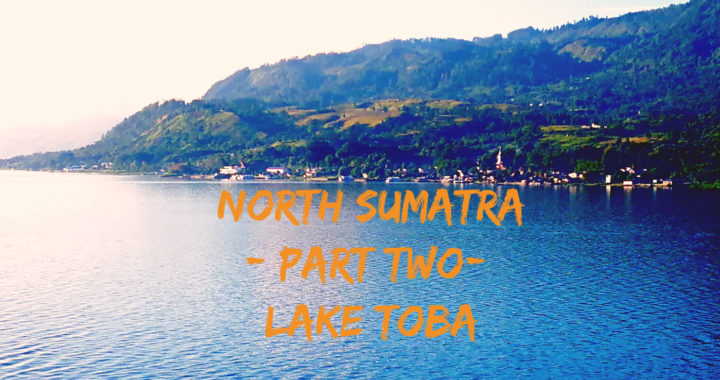Tangkahan to Lake Toba
It was time to leave Tangkahan for the trip south to Lake Toba.
We knew what we were in for thanks to our trip in. However, we also were aware of how much rain we had the night before. This we figured, might have some bearing on the condition of the road.
The storm was one of the worst we had experienced. You knew it was bad when the staff tell you to make sure your feet are off the tiled floor in case of lightening strikes. This is not uncommon apparently. The lightening is conducted along the reinforcing steel in the concrete floor!!
It was also dinner by candlelight as we had a rather prolonged power cut.
Transport
Once again we decided that the best and easiest form of transport would be by private car.
We really wanted to avoid as much of Medan as possible and negotiated for the driver to take us straight to Parapat, beside Lake Toba. This is where the ferry departs that takes you to Samosir Island where we will be staying for 4 nights.
It is a massive trip consisting of 257km and 9 hours of driving. This is negotiating some of the same roads we did coming into Tangkahan. The marathon drive cost us $150nz but once again, we considered it was worth the extra expense.
As expected, the weather hadn’t been kind to the roads. It took us three attempts to get through a thick clay bog full of water. The wheels spun as the car slowly sank in the bog. Thankfully we didn’t have to get out to push as the driver persevered and we managed to crawl our way out.
The next obstacle was a partial road washout. The fast flowing river had taken out half the road. To make matters worse, a truck carrying palm oil kernels had lost half his load right where the washout was.
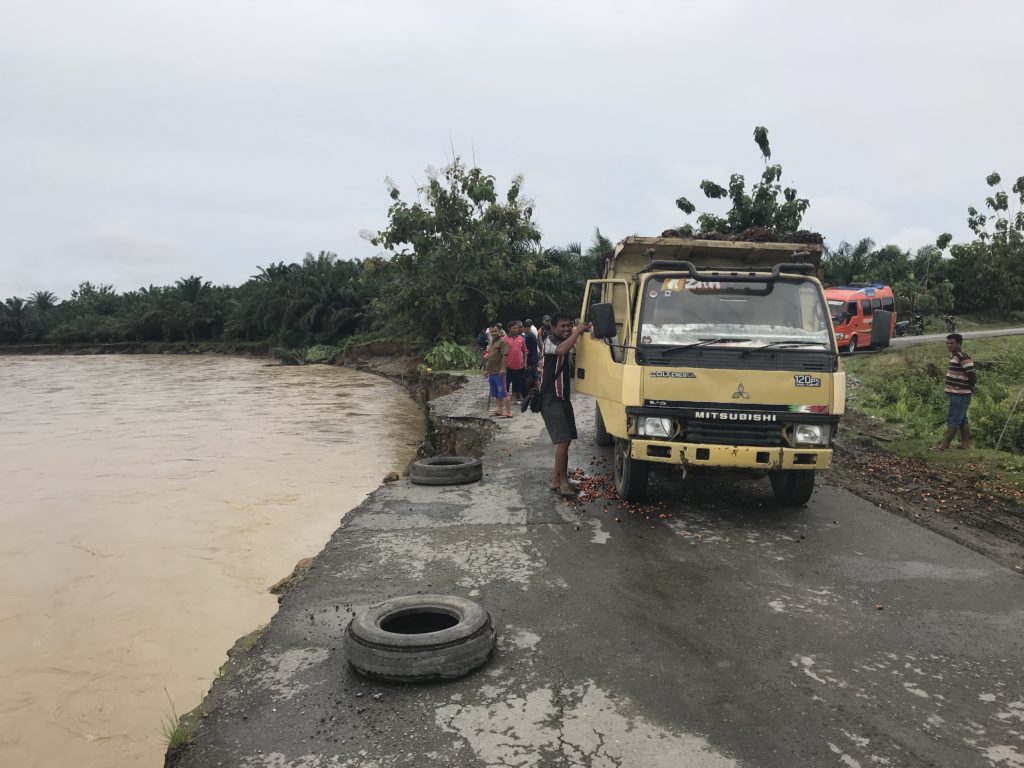
Road washout plus an insecure load on the truck – bad combination!
We were lucky that we were only held up for about 15 minutes before we inched our way past. I’m not sure how long the rest of the traffic had to wait.
Parapat
Parapat is a small community which earns it’s money by ferrying tourists and visitors to and from Samosir Island. There are bustling markets by the pier which makes this part of town a hive of activity.
We had time to wander further afield and meandered around the outlaying streets. We found resorts that time has not been kind to. There was obviously a much more lucrative tourist industry once but everything has gone into a state of decline. Large establishments appeared to be empty and no maintenance had been carried out for some time.
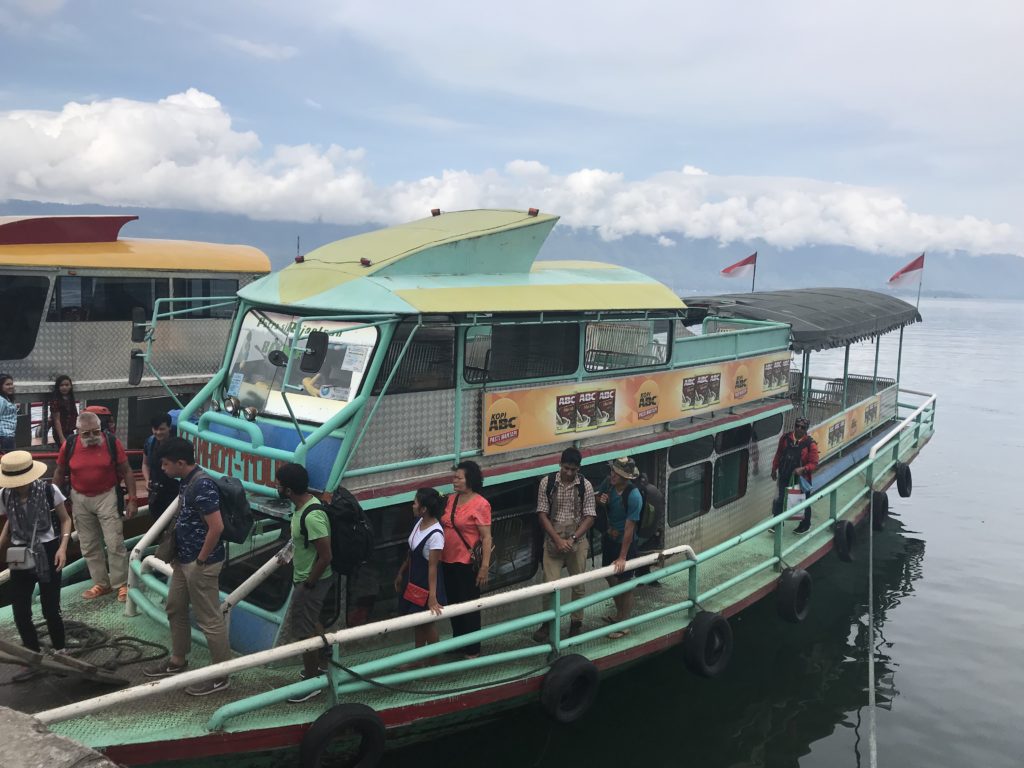
One of the many daily ferrys making its way to Samosir Island from Parapat
It is not a tourist destination but more of a transit area to the island.
A one way ferry trip to the island will cost you $1.50nz per person.
What about Lake Toba
Lake Toba is one of the most spectacular places we have visited. This huge crater lake has an island almost the size of Singapore in its centre (Samosir Is). The lake itself covers 1,145 square km and is over 450m deep in places – it is more like an ocean than a lake.
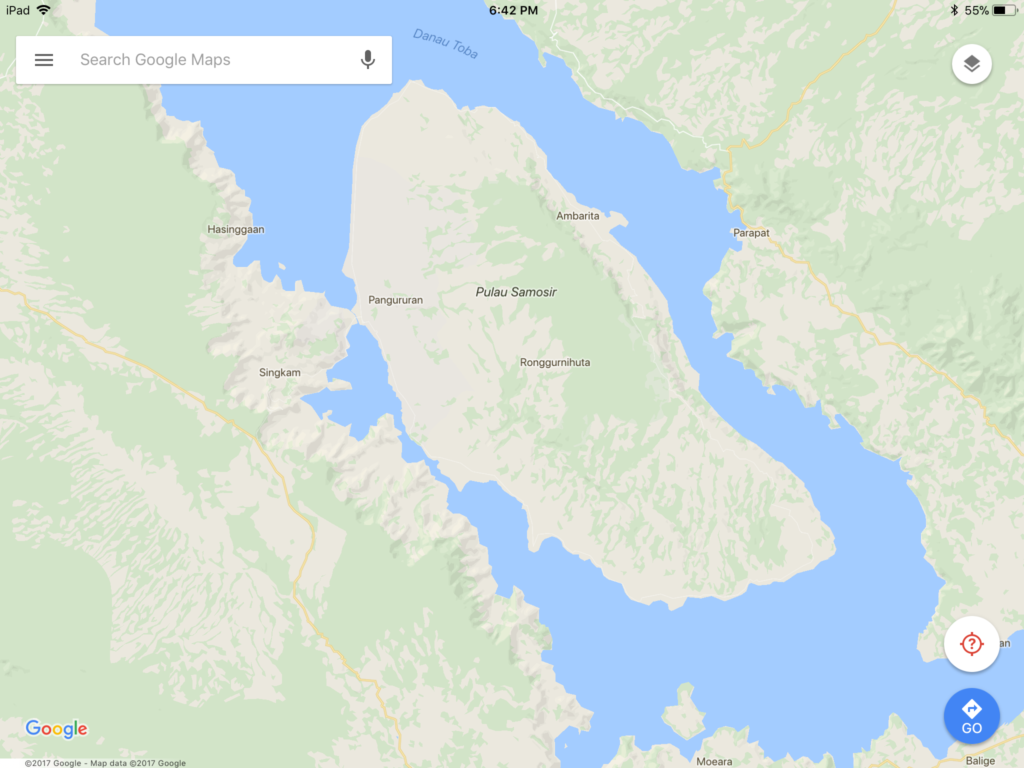
The lake was formed by an enormous eruption some 70,000 years ago. It covered the earth in a blanket of ash for years and is believed to the cause of the great Ice Age. There were supposedly only 3000 people left alive on earth.
It is the largest volcanic lake in the world, the largest lake in SE Asia and one of the deepest in the world.
The lake sits 900 meters above sea level so there is a cooler climate making a refreshing break from the heat and humidity of the jungle.
Samosir Island
Samosir Island is located within Lake Toba.
It was a lovely 30 minute ferry ride from Parapat.
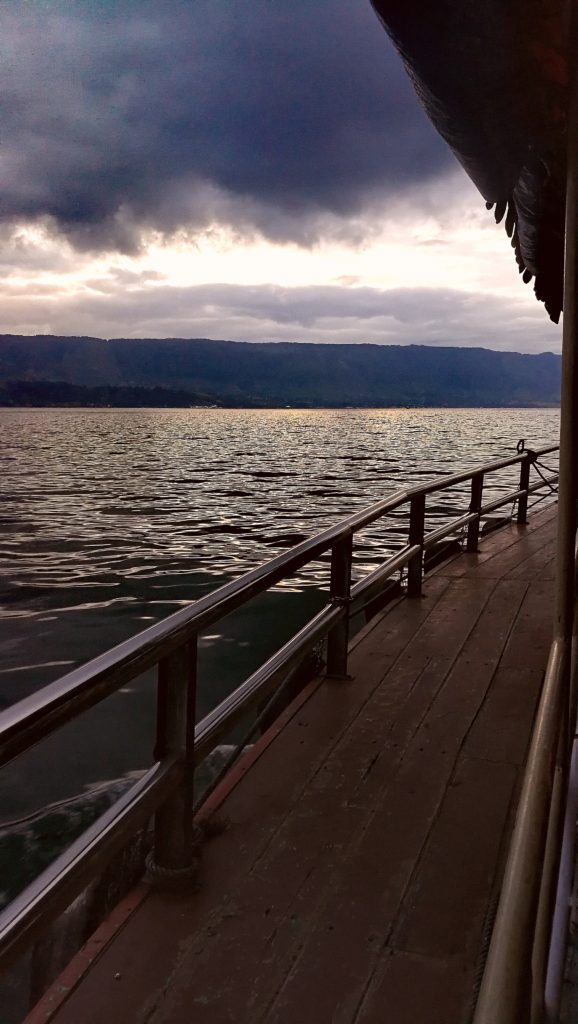
Our sunset ferry crossing to the island
The island is the heart of the Toba Batak culture. This is evident in the style of traditional Batak houses which are still very much in use today.
There are many villages dotted over the island. The most populated ones for accommodation choices is Tuktuk and Tomok. You will also find a plethora of small hotels, guest houses, home stays and restaurants. There are rows of souvenir stalls selling an array of Batak handicraft, from the traditional hand-woven wraps, sarongs to all sorts of knick-knacks.
Where Did we Stay on Samosir
We chose to stay in the small village of Tuktuk.
Our accommodation for the next 4 nights was at DGInn Bar and Cafe. This is a relatively new establishment and the ferry dropped us off at their own private jetty. We booked two nights on Agoda but then negotiated the price for a further 2 nights. The price per night averaged $38nz which included breakfast.
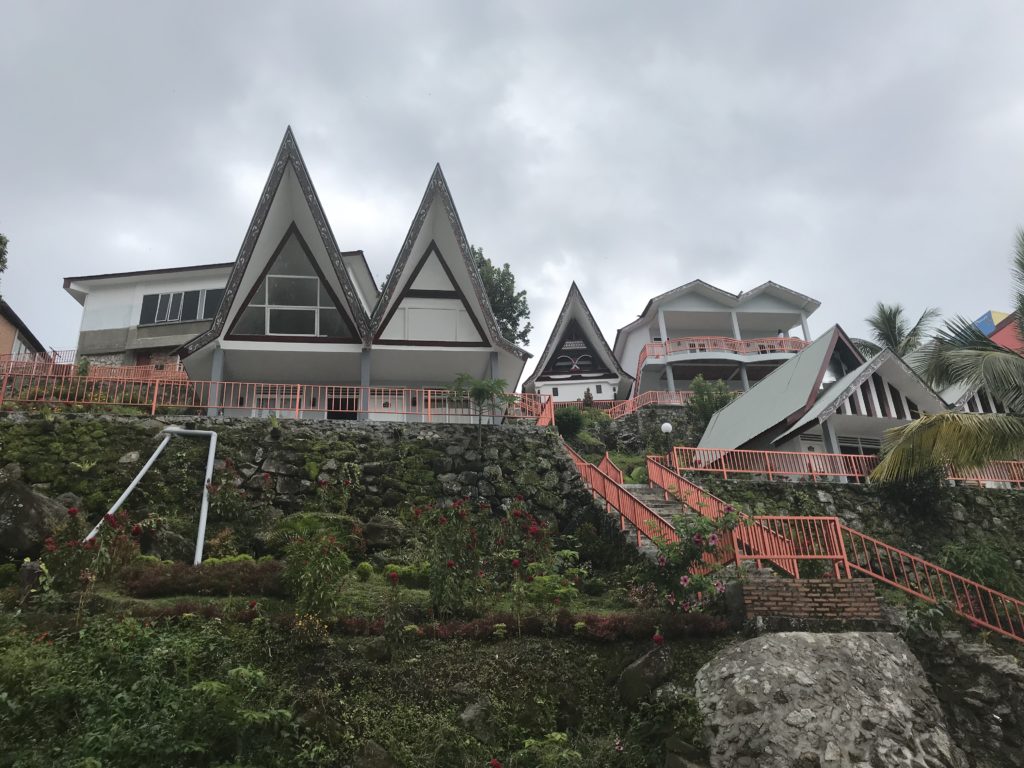
Our room sitting high on the hill (top left of picture)
It was a steep stair climb up the hill towards the reception area and then further steps up another hill to our room. It was at this point that I was very grateful that we were only travelling with ‘carry on’ day packs. I would not have made the assent had I needed to lug my 15kg backpack!
The location was nothing short of spectacular. Our room had panoramic views high up over the lake. I never tired of just sitting on our veranda looking out over the expansive vista of Lake Toba.
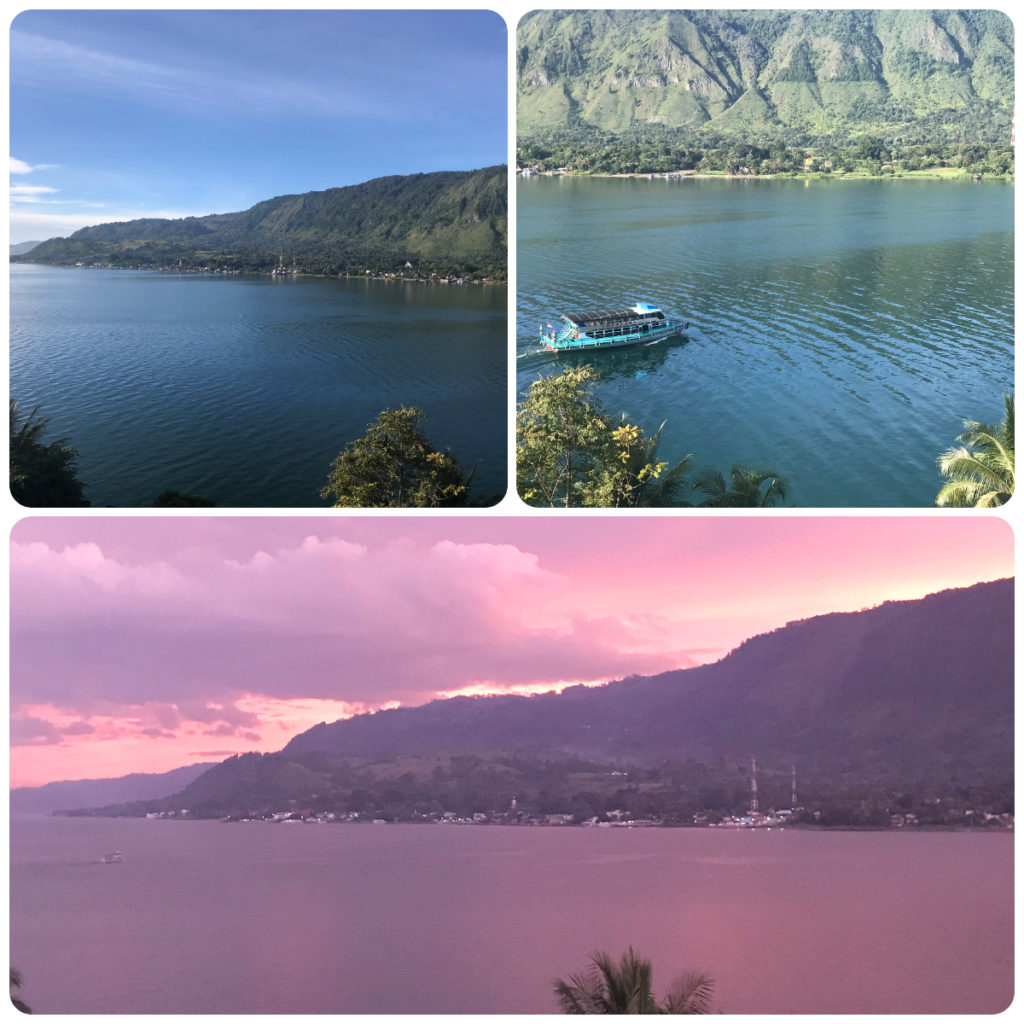
A room with a view, regular ferry service from Parapat and then there were the sunsets!!
Our room was new and very spacious. The only down side to our stay was the fact that they played very loud music every night in the bar/cafe area (even when it appeared that they had no customers). It was either a live band or karaoke night every night.
We found out that this very much a way of life in Sumatra. A life that is surrounded in music. If the music wasn’t playing at our establishment, then it was being played across the lake at another venue. We managed to combat the noise by wearing our ear plugs at night.
Maybe its an age thing. It was a shame that the peace and serenity would be ruined from about 5pm through to 4am. It was a small price to pay for the benefits of our location and I don’t think we would have been much better off anywhere else on the island as the music seemed to be wide spread.
Out and About the Island
The island is 44 km long and 20 km wide making it the largest lake island in the world. The best way to see the island is by scooter.
We hired a scooter from our accommodation which cost us $10nz for the day, including petrol.
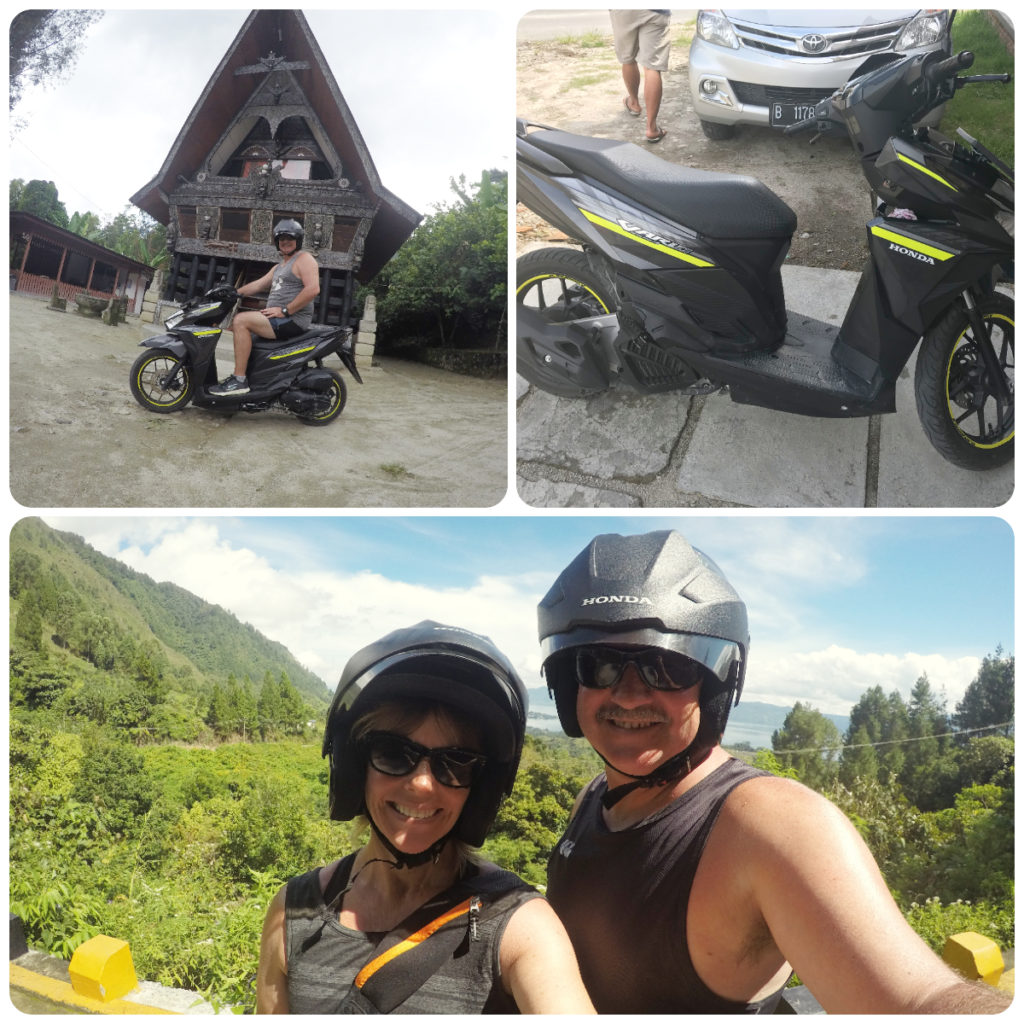
The best way to see the island
Running along the centre of the island is a large mountain range. We climbed up some of these mountains on our trusty scooter (which we named Horas – Batak greeting). The views were beautiful and we made several stops to take in the panoramic views of the lake and the rest of the island.
There were many examples of the island’s unique and fascinating Batak heritage with its clusters of traditional houses with roofs that curve upwards, plenty of white-washed churches dotting the landscape and a large array of stone tombs and monuments. The main religion on the island is Christianity so at times, there seemed to be more churches than people.
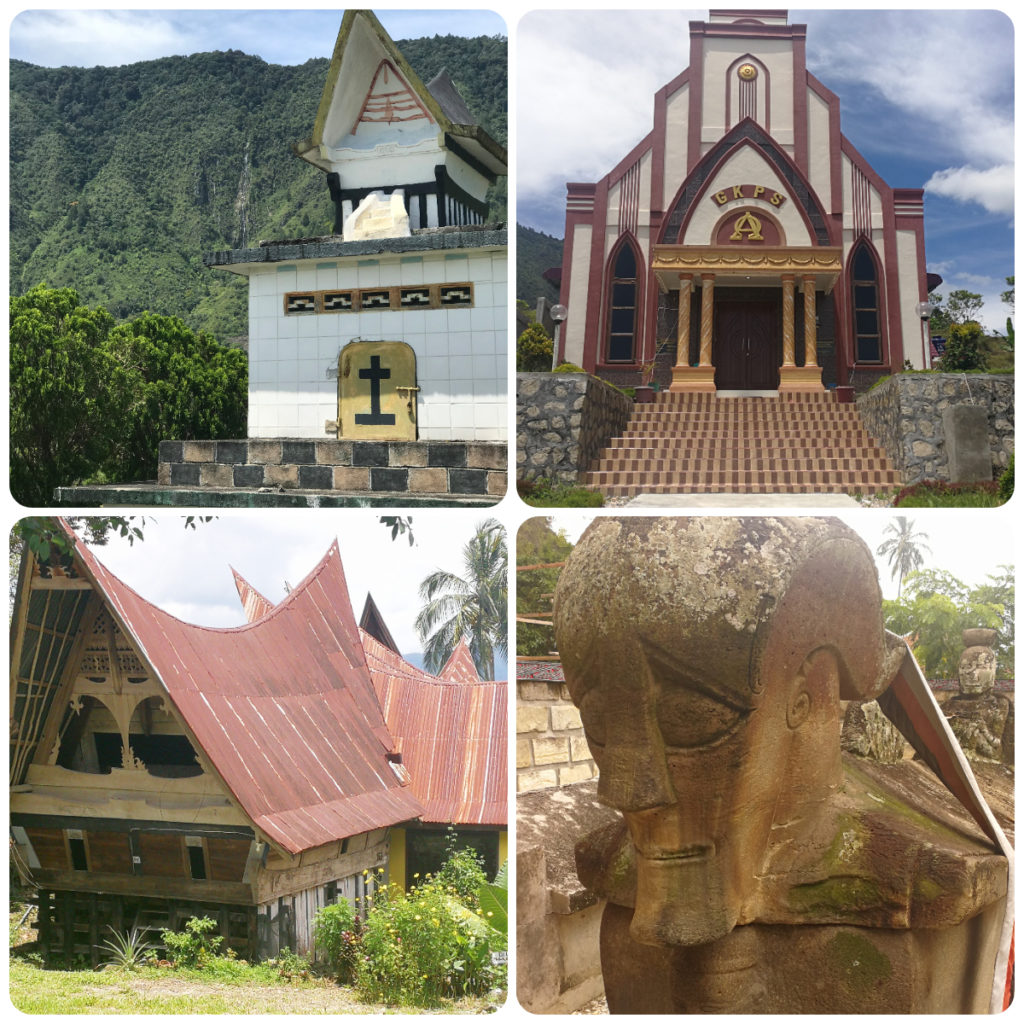
Tombs everywhere, Christian Churches, traditional Batak houses and a 370 year old tomb of a king
You know we love our food. We were wanting to try the traditional Batak food and we weren’t disappointed. The small family run restaurants were everywhere especially surrounding our accommodation. We found our 3 most favorite ones and frequented them for our lunches and dinner. Cheap, full of fresh ingredients and packed with flavour. I wouldn’t say that the traditional food is spicy hot, but there is a kick there. My pick of the dishes was called Pork Sak Sang. This can be made with either pork or dog meat (which I was pleased to learn is now banned).
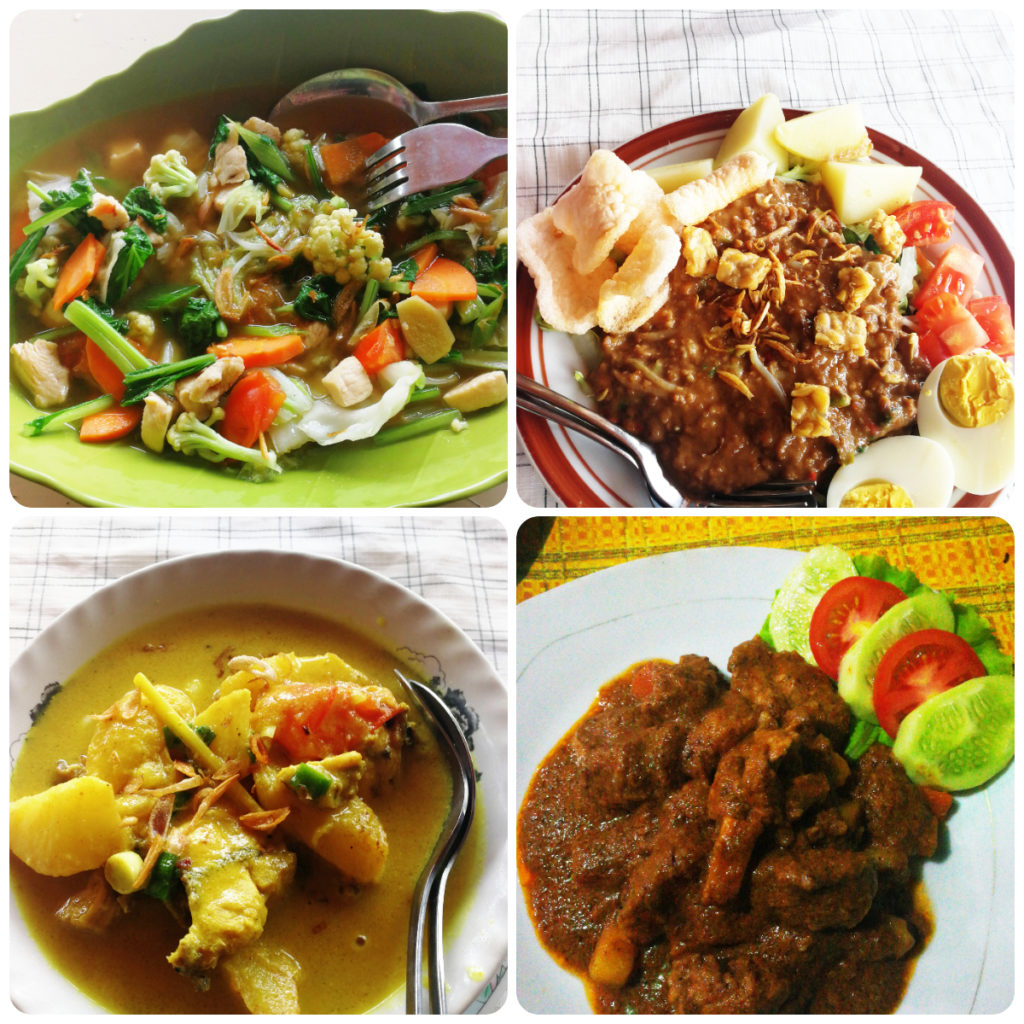
Clockwise from top right – cap cay kuah (beef & lamp veg), Sak Sang, vege curry and pork rendang. Meals cost average $2nz each
Summary
The breathtaking, unspoilt countryside with its steep, pine-covered slopes that descend into the deep blue water, and wide views in every direction ensured that our stay on Samosir Island did not leave us disappointed.
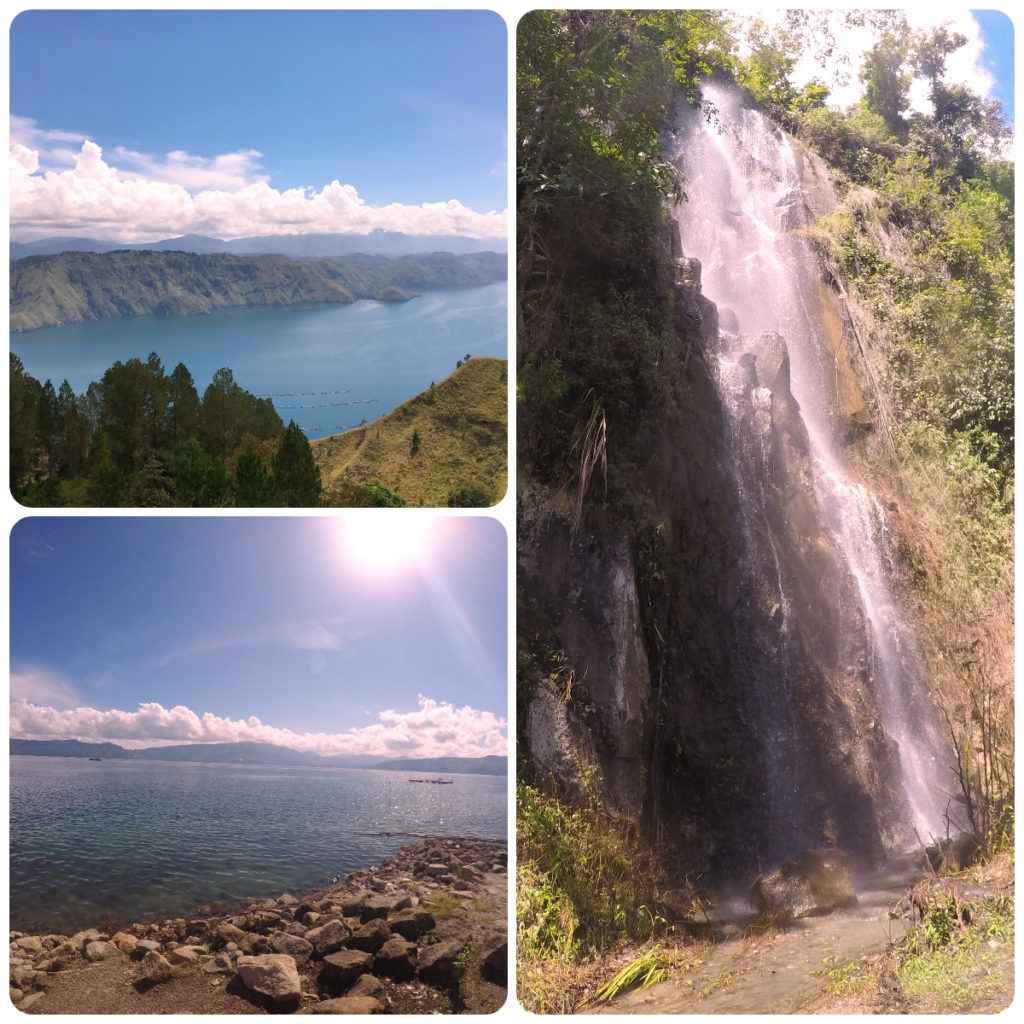
Scenery which took our breath away
Many of the vistas reminded us so much of home in NZ. Every turn in our journey around the island saw a change in landscapes and surroundings.
The people were all so friendly and accommodating although it seemed like everyone on the island wanted to hire us a scooter.
Click on the link below for a video of our highlights on the island.
